I review a lot of masks. However, despite reviewing a large variety of different cloth masks that all differ in slight ways, I’ve never used a mask that is redefining what a cloth mask is. This is exactly what CosyPro does in several ways – change what a cloth mask is.
A rather interesting fact that few people know about modern N95 respirators is that they are based on the shape of a bra cup. At the time, and with limited resources, this was an adequate design. The issue is that, over time, the design has stayed relatively the same with very few changes.
While there’s no denying that the design that N95 respirators use has served us well, there are many issues. N95 respirators require professional fit testing in order to provide their full filtration efficacy. But in a day and age when masks are essential for many people and such training is inaccessible for the public, a problem occurs.
This is where a lot of consumer-focused reusable cloth masks have tried to fill the gap. There are a lot of companies making strides when it comes to designing a mask that fits a wide variety of people without the need for training. Of course, N95 masks (and above) provide by far the best protection when they are worn properly. The issue lies in the fact that many more people use such masks than just professionals.
This is why a redesign is needed. While it’s very difficult to create a mask that provides as much protection as an N95 respirator that is worn with professional fit-testing, I think it’s very possible that there is a point in the middle – a mask that is able to provide decent filtration and fit without the need for training.
The team behind CosyPro has designed and engineered a method of wearing a mask that does exactly this. They identified that a mask was needed that can be worn daily by almost anyone. A mask that can be adjusted easily and that can adapt to a far larger range of facial shapes and dimensions than the standard ‘bra cup’ design.
Since the CosyPro mask is rather unique, I won’t be taking my usual review approach to it. Usually, I cover filtration, fit, design, price, and lifespan. However, in the case of CosyPro, there are a few differences which I will soon discuss. For that reason, I’ve chosen to focus on the design of the mask and what makes it unique (and possibly better) than standard reusable cloth masks.
CosyPro is currently on Indiegogo until early next month. Currently, that is the only location that the mask can be purchased, but this may change in the future as masks are manufactured by licensees. The theory is that the mask can be adjusted for specific needs by changing the materials in use. Hence, it’s hard to discuss filtration when it varies from mask to mask.
Check out CosyPro on Indiegogo
This post contains affiliate links. For more information, please refer to my affiliate disclaimer. I was sent a product for review, but the article is not sponsored. All opinions expressed in this post are my honest thoughts. I only recommend products that I genuinely believe in.
Information on this blog is for informational purposes only. Readers are encouraged to confirm the information herein with other sources. Furthermore, this information is not intended to replace medical advice from professionals. This website assumes no responsibility for the accuracy of the information, and information is subject to change without notice. Devices mentioned on this website are not medical devices and do not guarantee protection.
What Makes CosyPro Unique?
While it’s all well and good to discuss why CosyPro was created, it’s more important to discuss what actually makes it differ from other reusable cloth masks. What makes it so unique? Let’s get into that.
When you first see the CosyPro mask some of the differences are obvious. When opened, the mask looks more akin to a bandana than a respirator. This is due to the fact that the mask uses two points of adjustment – both of which are unique. To adjust the mask you have both a neckband and an adjustable chin-strap.
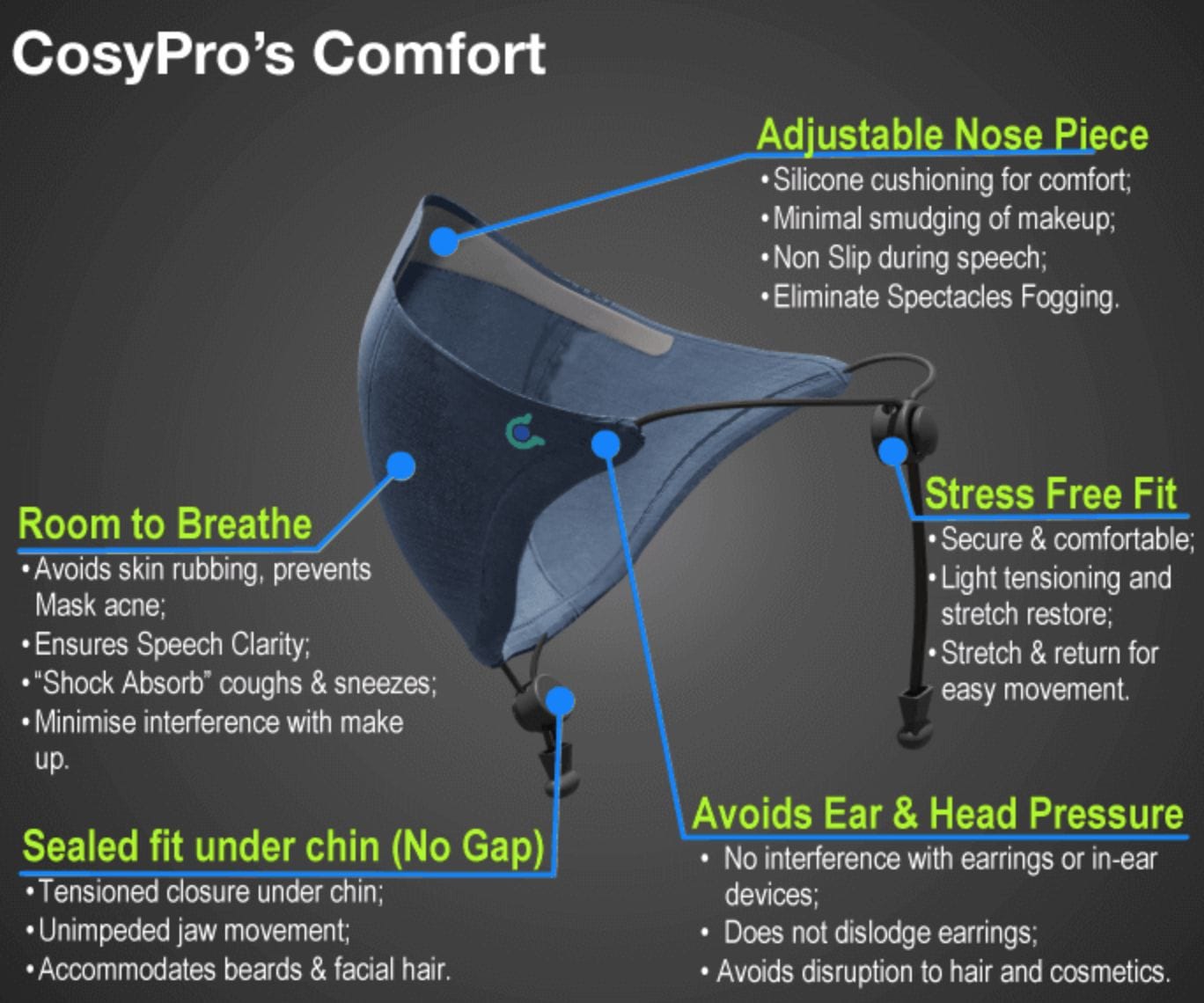
This leads into one of the biggest advantages of the mask. Masks and respirators are not only uncomfortable after long periods of wear (especially behind the ears), but they don’t work effectively on any person with facial hair. CosyPro seeks to fix this by sealing under the chin, rather than around the jawline. Therefore, with the exception of long beards, this mask should be able to seal well on anyone with facial hair.
Of course, comfort is another big factor. While there are some comfortable reusable cloth masks out there, the majority of masks are unpleasant to wear. One particular point of interest is the size of the filter. While N95 respirators have a large surface area (the whole mask is the filter), many reusable masks use far smaller filters. This can also lead to air by-passing the filter altogether.
This adds to breathing resistance and can lead to discomfort, due to more effort being required to breathe and higher temperatures and humidity within the mask. CosyPro is slightly different, however, as the full surface area of the mask is also the filter. This decreases breathing resistance and also helps to regulate temperature better.
Another big flaw of both the standard respirator and typical reusable cloth mask design is that the seals are easily broken. I’m sure everyone has had to readjust their mask after large head movements or even just after a period of time. Since both our faces and heads move so often, it’s very easy to dislodge a mask.
This issue exists because many masks seal around the jawline – perhaps the part of our face that moves the most. Even something as simple as speaking can temporarily break the seal. This is why I’ve always been a fan of masks with chin-wrap designs as they are less prone to leaking both during and after speaking.
On the other hand, having a mask that seals closer to the wearer’s neck means that even larger jaw movements should not dislodge the mask and cause the seal to break. This is an especially big deal for people who need to wear masks in daily life, such as for pollution protection.
These benefits, along with many others, all come from the design approach CosyPro has taken.
Check out CosyPro on Indiegogo
Design
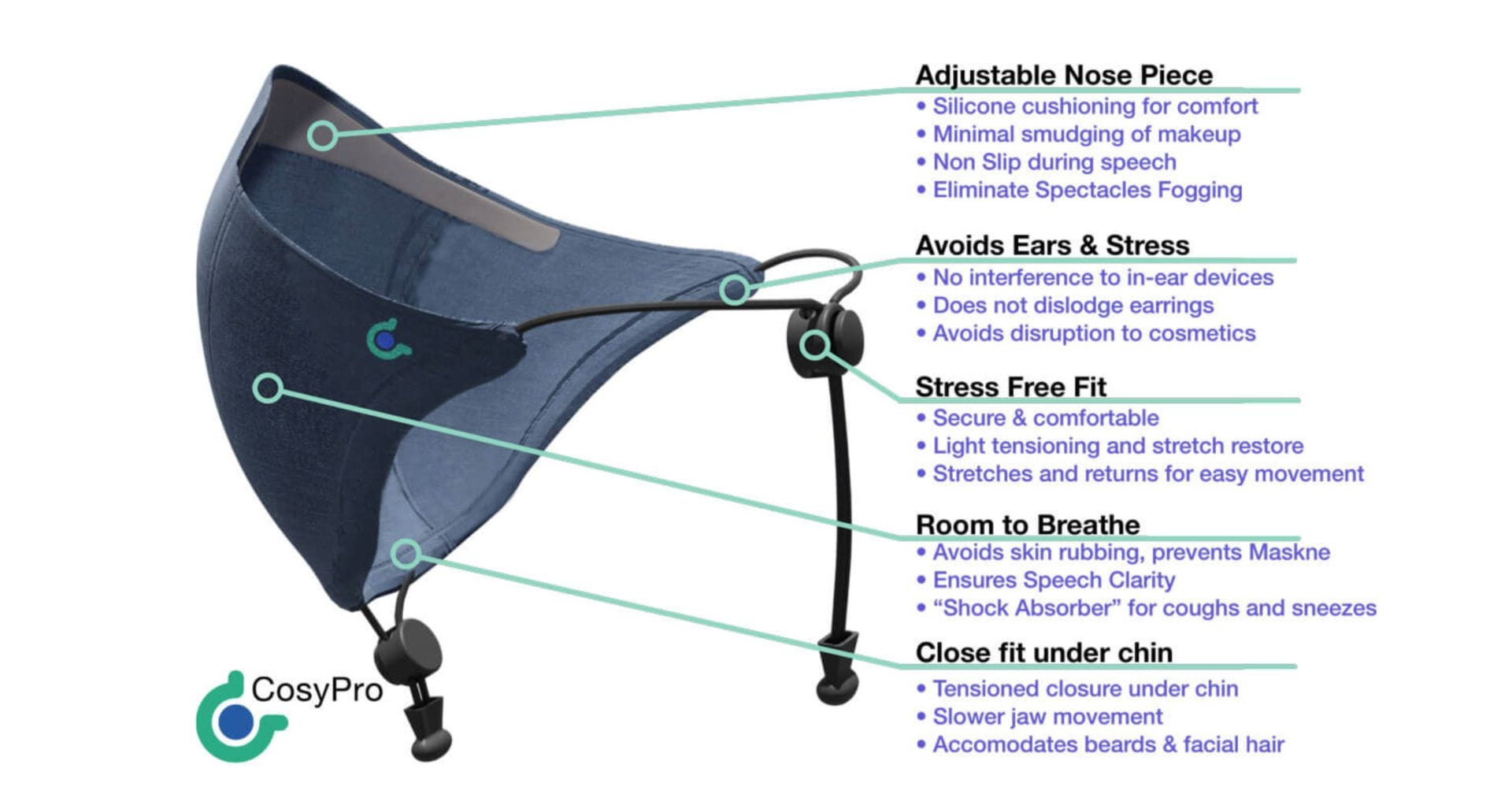
The team at CosyPro has identified a large range of issues with current respirator designs used commonly in N95, FFP2, and other respirators. The full list of issues that the CosyPro masks address can be seen in the image above.
While this list of fixes is very long, I want to pay particular attention to a few of the points. As someone that wears a wide range of masks every week, there are a few issues that either commonly occur or always occur. For me, the key issues that need to be addressed compared to current designs are:
- Universal fit (current masks have tend to only fit people with certain face shapes)
- Adjustability (similar to the above point, great adjustability is needed to ensure that the mask fits a wider range of people)
- Nose-bridge leakage (the majority of reusable cloth masks leak around the nose-bridge)
- Ear pressure (ear-loop masks are often very uncomfortable over longer periods of wear)
- Mask inhalation (many masks interfere with breathing when the wearer inhales)
While there are a range of other issues that standard cloth masks encounter, I want to particularly focus on these points. I believe that either solving these issues or minimising their effects will lead to a much more ‘wearable’ mask – something that is much needed with ever-increasing air pollution levels.
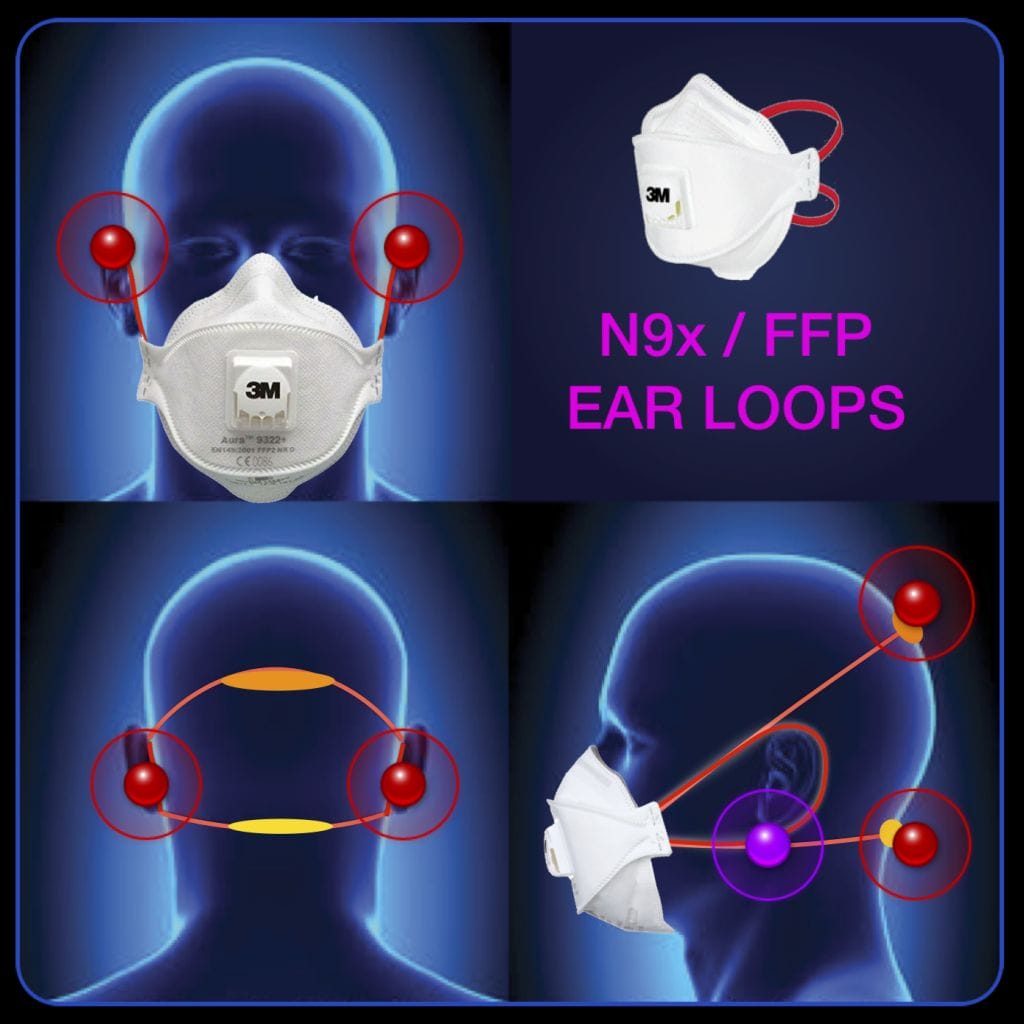
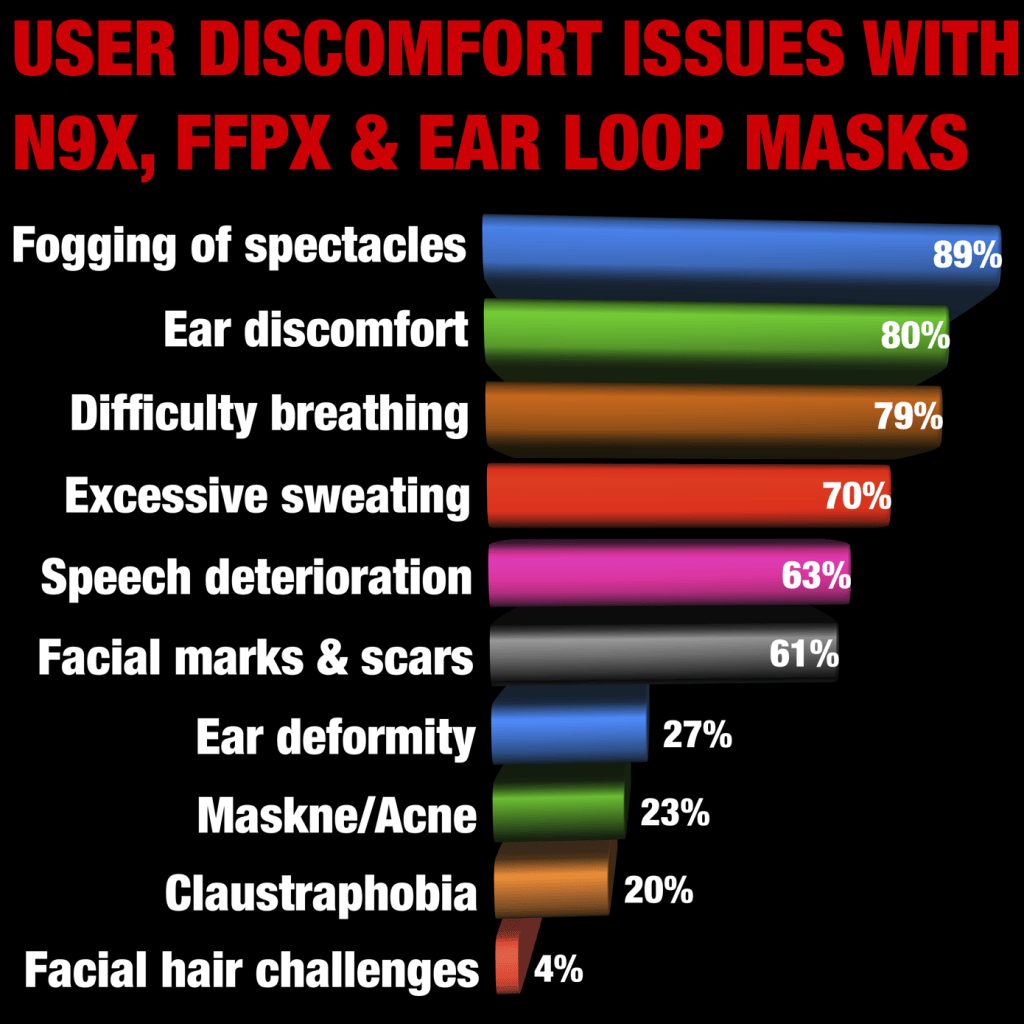
Out of the points mentioned above, CosyPro excels in removing ear pressure and having more adjustability which, in turn, leads to a more universal fit. While I haven’t been able to test the mask across a wider range of people with different faces, the three people who I’ve asked to test the mask have all been able to achieve a comfortable fit with minimal leaks.
This is more than can be said for most cloth masks. Masks are usually offered in a range of sizes with 3 or more sizes (small, medium, and large) and this sizing reflects the outer dimensions of each mask. While this sizing allows each user to purchase the best fitting size, these stricter dimensions also make it harder for people with certain facial features to fit the mask. Due to this, most masks struggle to fit a range of people.
While CosyPro does have mask sizes, these sizes are far more flexible and a medium-size mask will fit the majority of people with smaller faces while the large will fit anyone with a larger face. Further, the mask is more easily adjustable and therefore each mask can fit a wider range of people.
However, fit is most important as a good fit is required to remove leaks. When a mask is leaking, you are not getting the full protection that the filter media is capable of providing. This is perhaps the biggest issue with current masks and respirators – both reusable and not. They’re not designed for every face, and for the vast majority of people, achieving a complete seal is impossible.
This is my list of the most important design elements that CosyPro addresses. I will share my thoughts in more detail, especially regarding the fit, in the final section of this article.
Check out CosyPro on Indiegogo
Flexibility
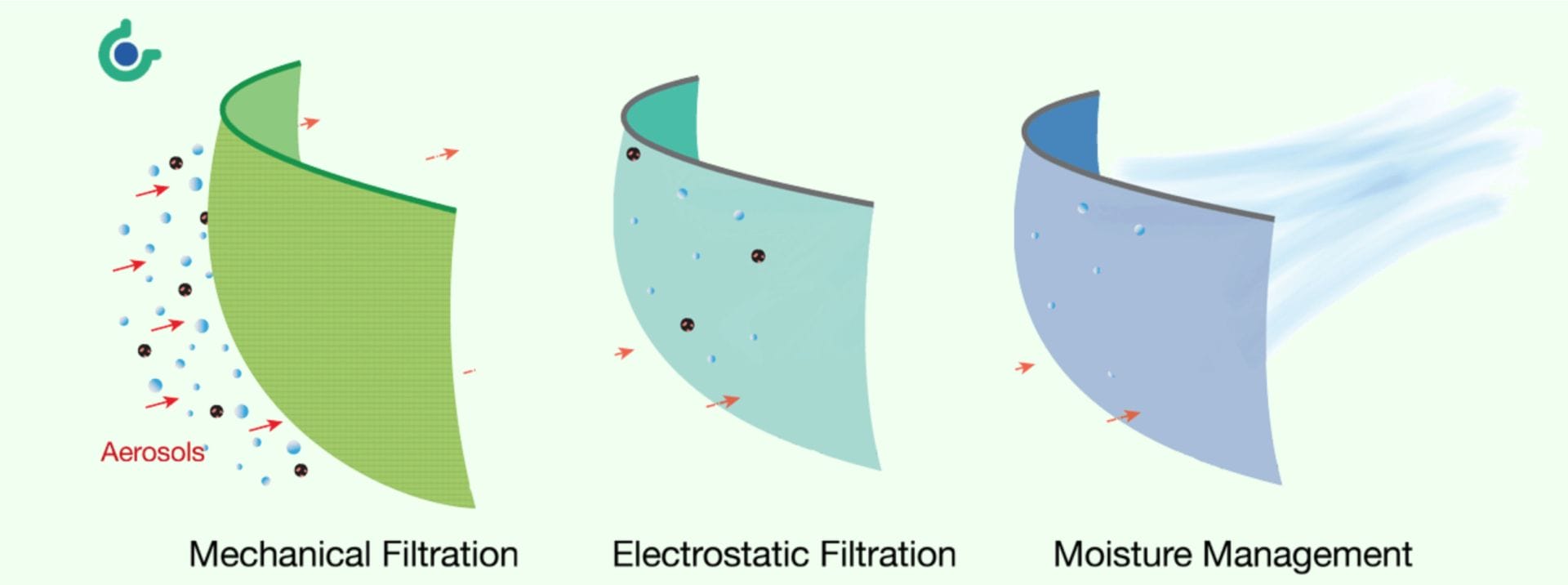
I think that the keyword that sums up CosyPro is ‘flexibility’. It’s one of the most flexible masks that I have tried and the team has also shown this strength through their marketing materials. CosyPro itself has a lot of flexibility in fit (which I’ve discussed above), but that’s not the only aspect in which flexibility plays an important role in the mask.
CosyPro is designed to be created using a range of different materials as filter media. When another company manufactures the mask, they are able to choose exactly what materials are used in each layer. This allows them to dictate exactly what the mask is – is it an easily breathable mask that provides protection again big particles, a mask that filters all particles at the cost of breathability, or is it just a mask for hay fever?
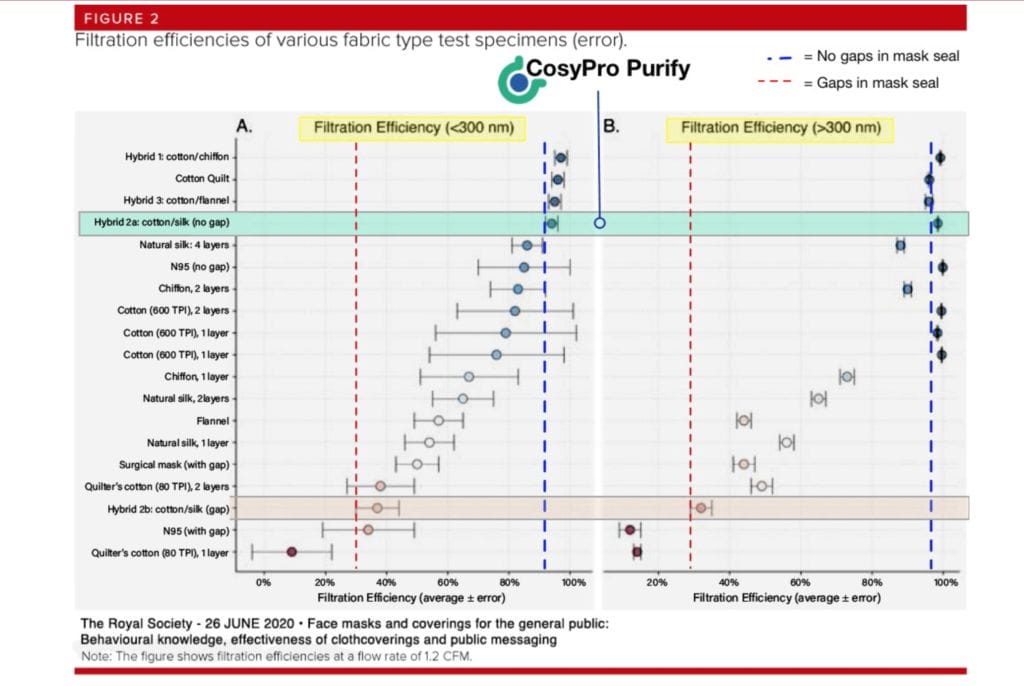
While the exact specifications and materials used depend on the manufacturer, this is a big bonus as it means that masks can be created for specific purposes and the importance of specific factors (I.E filtration, breathability, or comfort) can be balanced to create a mask that fits local users needs using locally available materials.
Of course, this flexibility also exists on a smaller scale when it comes to wearing the mask. While you will not receive the full protection that the mask is capable of unless it’s fitted tightly without leaks, there are times when you may want to open the bottom of the mask (making it similar to a bandana) or to take the mask off. In this case, the mask sits around your neck and can be easily donned again when needed.
All of these different aspects show just how flexible this design is. Not only when it comes to aspects like manufacturing, but also on a smaller scale with how the user chooses to wear it and how it can adapt to the situation.
Check out CosyPro on Indiegogo
My Experiences
I’ve been wearing the CosyPro medium-size mask for about one week at this point. After wearing it daily I have thoughts to share on the design and whether or not CosyPro actually solves the problems that it set out to fix. The first element that I want to discuss is comfort.
While realistically no mask is entirely comfortable, masks that use headbands and neckbands tend to be more comfortable simply because they don’t cause aching ears. However, even when comparing CosyPro to other masks that use headbands, I would say that it is more comfortable. I can easily wear this mask for long periods without issues.
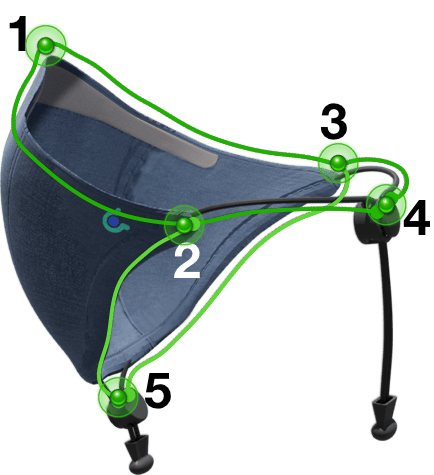
CosyPro’s 5 point securing mechanism
The materials in the mask that I used (linen, silk, and cotton) are also very breathable and compared to cloth masks with stronger filters CosyPro was significantly easier to breathe through. On top of this, the inner cotton layer didn’t interfere too much with breathing or talking. While it did sometimes get in the way if I was breathing heavily (such as when exercising), it was generally fine in day to day usage.
One minor issue that I did notice is that the chin-strap can push into the skin under my jaw a bit when fully tightened. The easy way to prevent this issue is to pull the strap fully tight and then release it slightly. After doing this, the issue largely disappeared.
This leads me to my second point, fit. Fit is vital for any mask and CosyPro is no exception. After doing some self-fit-testing I was able to achieve a surprisingly good fit. Initially, I donned the mask with the top sitting halfway up my nose (similar to how I would normally wear other masks). However, with this method I noticed a lot of leaks around the bridge of my nose.
It took me a few hours to figure out that moving the mask higher on my face was the way to almost fully remove this leak. Instead of placing the top of the mask halfway up my nose, I moved it so that the peak of the mask sat between the bottom of my eyes. This is not how I wear most masks so I was quite surprised to find that this greatly minimised the leak.
The the chin area is another common location where the seal often breaks. Chin-wraps often partly solve this issue because they create a seal further back under the jawline, an area that is more even and flat. However, many chin-wraps still leak slightly. CosyPro is interesting because it sits even further back, almost touching my neck.
I found that this area of the mask was not an issue in regards to leakage. The actual seal was created around the bottom of my jaw, and it was almost like there were two seals – one on the bottom of my jaw, and one further back near my neck. I found that the bottom of the mask was not an issue when it comes to leakage.
Overall, when it comes to the fit CosyPro does well. While there were some minor leaks near my nose after adjustment, these were fixable by adding a piece of memory foam. It’s also worth mentioning that I have yet to find any cloth mask that creates a perfect seal – and I’ve tried a lot!
The only other thoughts that I think are pertinent are regarding the design. I appreciate how the mask doesn’t stand out and how it’s easily wearable in daily life. Often mask companies seem to overlook the fact that most customers want a mask that blends in and that is easy to wear. CosyPro does this very well.
Check out CosyPro on Indiegogo
Conclusion

I’m excited by the idea of CosyPro because it upsets the status-quo that we’ve seen with masks. While there are some other interesting concepts, ideas and prototypes out there, few of them involve updating the typical cloth mask design. Many of them have moved to other materials such as silicone – while this is great, cloth masks are still essential in many cases.
My views on this design are positive overall. It’s not perfect and I would like to see some small changes made, but overall I think that this design addresses several of the current challenges seen with both masks and respirators. I’m also especially excited by the fact that the mask can be customised using different materials to create the exact balance that is desired.
If you’re interested in learning more about CosyPro please feel free to check out their website or the campaign on Indiegogo. Both pages have a lot more information!
Check out CosyPro on Indiegogo
Have Questions or Comments?
Join the discussion on the BreatheSafeAir Community Forum. Ask any questions you have about air quality or adjacent topics and get quick answers!
Thanks for the reviews. As school days approach, cases are increasing, especially in where I live (SE of USA). Our state’s vaccine rate is around 40s% among the adult population, even though vaccines are readily available everywhere. My family is fully vaccinated, but I start to research for more comfortable masks to send my kid back to school (We live at Gulf, and summer is very humid which lasts till October). It will be his first time since pandemics returning to school. He will be wearing a mask even when everyone isn’t. Asymptomatic or symptomatic fully vaccinated individuals can still pass the virus according to recent news. Please keep up the good work. Your site is my most go-to reference when shopping for masks.
Thank you for your comment, Julia. I am really happy to hear that you have found the website useful.
Interesting, although I note that their website says: “It is not designed to be an airtight seal as it is important to allow low level loads of materials to pass in order to develop immunity and reduce allergies. ” (https://www.cosypro.uk/Support/Support/usage.php)
In relation to Covid, are they arguing that letting a small amount of Covid through is a good thing? This would astonish me. Surely even a single particle can cause infection (although the lower the number of particles, the better chance our immune system will fight it off)?
Not that I would expect it to be 100% airtight. What matters is whether it is more airtight than other masks.
Nevertheless, I hope that manufacturers do start using this design.
Hi Gareth,
Thank you for your feedback, we welcome comments that help us improve.
Straight off, we should not have made that comment on the website as this is a matter of personal thought.
Some years ago, I learnt that an over-sanitised space impedes the development of the immune system as your body does not get practice “fighting” germs. We are also aware that illness from virus is indicated by the “viral load” or “infectious dose”, essentially indicating that the body can develop immunity if the infection ingested is low enough but can be overwhelmed by a bigger dose.
If you are interested in the detail, more information is available from the links below.
How much of the coronavirus does it take to make you sick? The science, explained
https://www.statnews.com/2020/04/14/how-much-of-the-coronavirus-does-it-take-to-make-you-sick/comment-page-1/
Other interesting links (web search for “viral load” or “infectious dose”)
https://www.reuters.com/business/healthcare-pharmaceuticals/delta-cases-show-300-times-higher-viral-load-skorea-study-2021-08-24/
https://www.webmd.com/lung/covid-viral-load#1
https://www.bmj.com/content/369/bmj.m1728
When tested, a face mask is fixed on a non-moving object. Similar to the emissions testing debacle, the filtration efficiency of the material is tested but not the leakage when talking or other facial movement. The CosyPro seals the entire area of lower jaw movement and the filtration efficiency of the mask is much closer to that of the filtration material, due to the lack of leakage. What this means is that if you material that filters say 95%, that will be about the overall efficiency. Few germs will get through to stimulate the immune system.
All said and done, this is a matter of personal choice. All we can say is that the CosyPro design leaks far less that any mask that relies on non-facial movement for its seal.
I hope this helps explain why the information was on the site and confirm that this personal opinion has now been removed from the site.
Gareth, Thank you for bringing this to our attention,
Mark, Product Development, CosyPro
Is this mask currently available in the UK? I’d like to try it, but the Indiegogo campaign is closed.